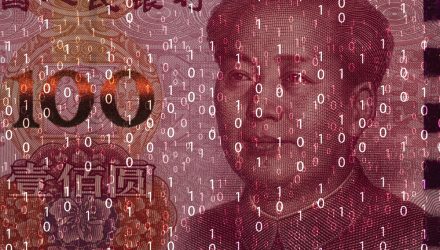KraneShares’ team took a closer look at China tech hub Shenzhen this week in a visit by the asset manager’s cultural analyst Xiabing Su. Shenzhen, China’s third-largest city, stands out as a center for technological innovation, owing to its history as a special economic zone and to its majority population of newcomers, per Xiabing’s report.
Shenzhen, which connects Hong Kong to mainland China, has the third-highest GDP among Chinese cities in addition to the third-largest population. Having only become a city in 1979, Shenzhen exploded in size following its designation as the first special economic zone in the 1980s. Today, it hosts key Chinese firms, including Huawei, Tencent (TCEHY), and BYD (BYDDY). Shenzhen also can claim the fourth-busiest port in the world.
“No one could ever expect that Shenzhen could develop into such a big city,” Cheng Yimu, executive vice president of the Shenzhen Electronic Chamber of Commerce, told Xiabing.
“Shenzhen has a population of more than 10 million, almost 20 million, and its GDP ranks third in the country,” Cheng said. “The development of Shenzhen has far exceeded the expectations of Grandpa Deng (Deng Xiaoping) as well as those of us old Shenzheners. No one ever expected Shenzhen to grow so large.”
Understanding China Tech Hub Shenzhen
With that growth, newcomers vastly outnumber the locals in the city, which keeps it from feeling insular. That helps boost a culture of innovation that welcomes entrepreneurs. The city itself has official policies to support innovation to help solve its own problems. Specifically, there’s policy support for developing building information models, or BIMs.
See more: “As China’s Tech Sector Climbs, KLIP Enhances With Income”
The city hosts the well-known Huaqiangbei district, one of the largest electronics markets in the world. Tencent itself launched in the market’s Saige Square, and the market still supplies countless small tech firms with cables, chips, and other key components. Today, the area provides a thorough supply chain for tech firms.
“Shenzhen Huaqiangbei has its own characteristics and charm,” Cheng said. “Where does its vitality come from? It comes from the market, from entrepreneurs, and small bosses in the market.”
For Xiabing, the city represents China’s economic growth and development in microcosm and a China tech hub to watch. KraneShares offers a suite of ETFs with China exposures and approaches, including tech thematic funds. KraneShares funds include the well-known KraneShares CSI China Internet ETF (KWEB) as well as the KraneShares MSCI China Clean Technology Index ETF (KGRN).
For more news, information, and analysis, visit the China Insights Channel.

